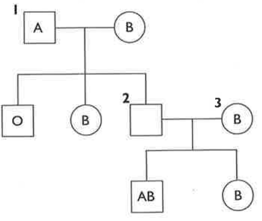Mary Jones and Geoff Jones Solutions for Chapter: Inheritance, Exercise 2: Questions
Mary Jones Biology Solutions for Exercise - Mary Jones and Geoff Jones Solutions for Chapter: Inheritance, Exercise 2: Questions
Attempt the practice questions on Chapter 18: Inheritance, Exercise 2: Questions with hints and solutions to strengthen your understanding. Cambridge IGCSE® Biology Coursebook Third Edition solutions are prepared by Experienced Embibe Experts.
Questions from Mary Jones and Geoff Jones Solutions for Chapter: Inheritance, Exercise 2: Questions with Hints & Solutions
If a normal human cell has 46 chromosomes, how many chromosomes are there in a human sperm cell?
Using the symbols N for normal wings, and n for vestigial wing, write down the genotype of a fly which is heterozygous for this characteristic.
Using the symbols N for normal wings, and n for the vestigial wing, write down the possible genotypes of the gametes of a heterozygous fly.
The normal wing of a fly is represented by the symbol N and n for the vestigial wing. Using a complete genetic diagram, work out what kind of offspring would be produced if the heterozygous fly mated with one which was homozygous of normal wings.
In humans, the allele for red hair, b is recessive to the allele for brown hair, B. A man and his wife both have brown hair. They have five children, three of whom have red hair, while two have brown hair. Explain how this may happen, using a genetic diagram to explain the answer.
In Dalmatian dogs, the allele for black spots is dominant to the allele for liver spots. If a breeder has a black-spotted dog, how can he or she find out whether it is homozygous or heterozygous for this characteristic? Use genetic diagrams to explain the answer.
A man of blood type A married a woman of blood type B. They had three children, of blood types, O, B and AB, respectively. What are the genotypes of the parents and children? Use the genetic diagram to explain the answer.
The pedigree diagram shows the known blood group in three generations of a family. Squares represent male and circle represent the females. What are the genotypes of 1 and 3? What is the blood group of 2?

